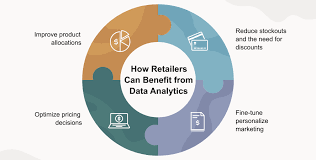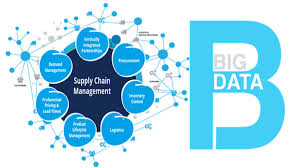The Power of Retail Data Analysis
Retail data analysis has become a crucial tool for businesses looking to gain a competitive edge in today’s market. By harnessing the power of data, retailers can make informed decisions, improve operational efficiency, and enhance customer experience.
Understanding Customer Behaviour
One of the key benefits of retail data analysis is its ability to provide insights into customer behaviour. By analysing purchase history, browsing patterns, and demographic information, retailers can better understand their customers’ preferences and tailor their offerings accordingly.
Optimising Inventory Management
Effective inventory management is essential for retail success. Data analysis allows retailers to forecast demand accurately, optimise stock levels, and reduce excess inventory. This not only improves cash flow but also ensures that customers can find the products they need when they need them.
Enhancing Marketing Strategies
With retail data analysis, retailers can create targeted marketing campaigns that resonate with their target audience. By segmenting customers based on their behaviour and preferences, businesses can deliver personalised promotions and messages that drive engagement and increase sales.
Improving Operational Efficiency
Data analysis can also help retailers streamline their operations and identify areas for improvement. By analysing sales performance, staffing levels, and store layout, businesses can make data-driven decisions that increase efficiency and reduce costs.
The Future of Retail Data Analysis
As technology continues to evolve, the potential for retail data analysis is limitless. From predictive analytics to AI-powered insights, retailers have access to powerful tools that can revolutionise the way they do business. Embracing data-driven decision-making is no longer a luxury but a necessity for staying competitive in the modern retail landscape.
In conclusion, retail data analysis offers a wealth of opportunities for businesses looking to thrive in an increasingly digital world. By leveraging the insights gained from data analysis, retailers can drive growth, improve customer satisfaction, and stay ahead of the curve in today’s dynamic market.
Understanding Retail Data Analysis: Key Questions and Insights
- How do you Analyse a retail store?
- What are the 4 types of retail analytics?
- What is data analysis in retail?
- What does a retail data analyst do?
- What type of data is used in retail?
- What is retail analytics tools?
How do you Analyse a retail store?
Analyzing a retail store involves collecting and examining various data points to gain insights into the store’s performance and customer behaviour. To start, retailers can utilise sales data, foot traffic patterns, and inventory levels to understand what products are selling well, how customers move through the store, and whether stock levels are optimal. Additionally, implementing customer surveys or loyalty programmes can provide valuable feedback on customer preferences and satisfaction levels. By combining quantitative data with qualitative insights, retailers can make informed decisions to improve operations, enhance the shopping experience, and drive sales in their retail store.
What are the 4 types of retail analytics?
In the realm of retail data analysis, there are four primary types of retail analytics that businesses commonly utilise to gain valuable insights into their operations and customer behaviour. These include descriptive analytics, which focuses on summarising historical data to provide a snapshot of past performance; diagnostic analytics, which delves deeper into the reasons behind trends and patterns identified in the data; predictive analytics, which uses statistical algorithms to forecast future trends and outcomes based on historical data; and prescriptive analytics, which goes a step further by recommending specific actions that businesses can take to optimise their strategies and achieve desired outcomes. Each type of retail analytics plays a crucial role in helping retailers make informed decisions and drive success in today’s competitive market landscape.
What is data analysis in retail?
Data analysis in retail refers to the process of examining and interpreting data related to various aspects of retail operations, such as sales, customer behaviour, inventory management, and marketing effectiveness. By utilising advanced analytical techniques, retailers can uncover valuable insights that help them make informed decisions to improve business performance and enhance the overall customer experience. Through data analysis in retail, businesses can identify trends, forecast demand, optimise pricing strategies, personalise marketing efforts, and streamline operations for greater efficiency and profitability. In essence, data analysis empowers retailers to leverage the power of data to drive strategic decision-making and stay competitive in today’s fast-paced retail landscape.
What does a retail data analyst do?
A retail data analyst plays a pivotal role in the retail industry by utilising data to extract valuable insights that drive business decisions. Their primary responsibilities include collecting and analysing data related to sales, customer behaviour, inventory levels, and market trends. By identifying patterns and trends within the data, retail data analysts help businesses understand their customers better, optimise inventory management, enhance marketing strategies, and improve overall operational efficiency. Through their analytical skills and expertise in interpreting data, retail data analysts provide actionable recommendations that enable retailers to make informed decisions aimed at increasing profitability and staying competitive in the market.
What type of data is used in retail?
In the realm of retail data analysis, a diverse range of data types is utilised to extract valuable insights and drive informed decision-making processes. Retailers typically leverage transactional data, such as sales records and customer purchase history, to understand buying patterns and trends. Additionally, demographic data provides crucial information about customer segments, enabling targeted marketing strategies. Inventory data helps in managing stock levels efficiently, while operational data aids in optimising store layouts and staffing requirements. By combining and analysing these various data types, retailers can gain a comprehensive understanding of their business performance and customer behaviour to enhance overall operations and profitability.
What is retail analytics tools?
Retail analytics tools are software solutions designed to help retailers gather, analyse, and interpret data related to their business operations. These tools enable retailers to track key performance indicators, customer behaviour, inventory levels, and sales trends. By utilising retail analytics tools, businesses can make data-driven decisions that drive growth, improve operational efficiency, and enhance the overall customer experience. These tools often incorporate features such as predictive analytics, data visualisation, and reporting capabilities to provide valuable insights that empower retailers to stay competitive in the ever-evolving retail landscape.




